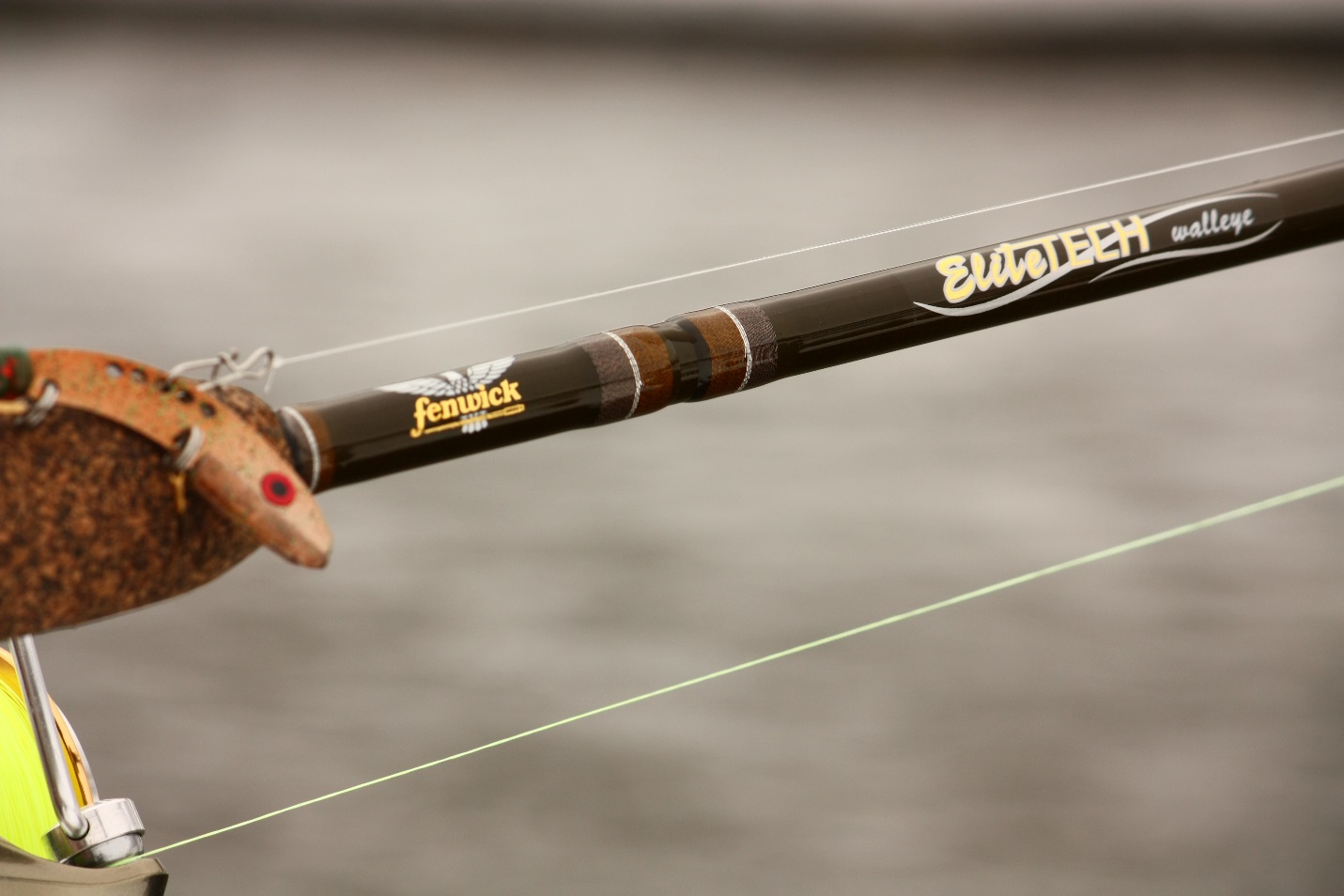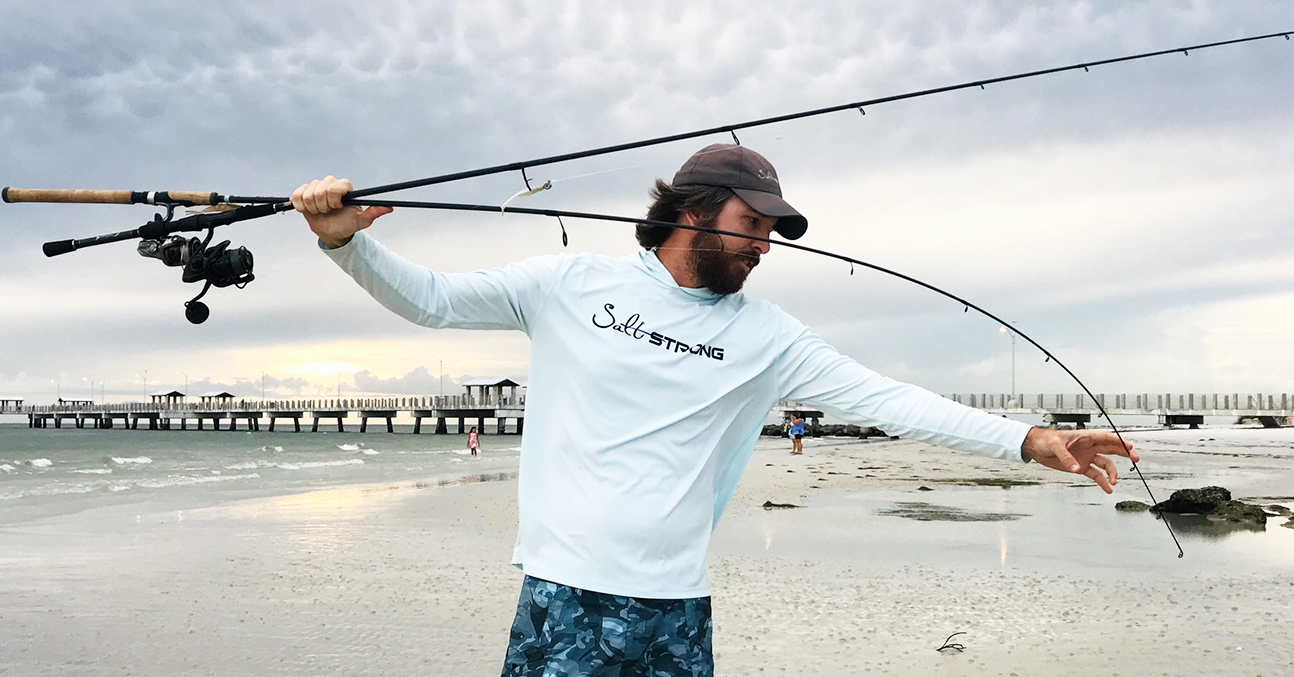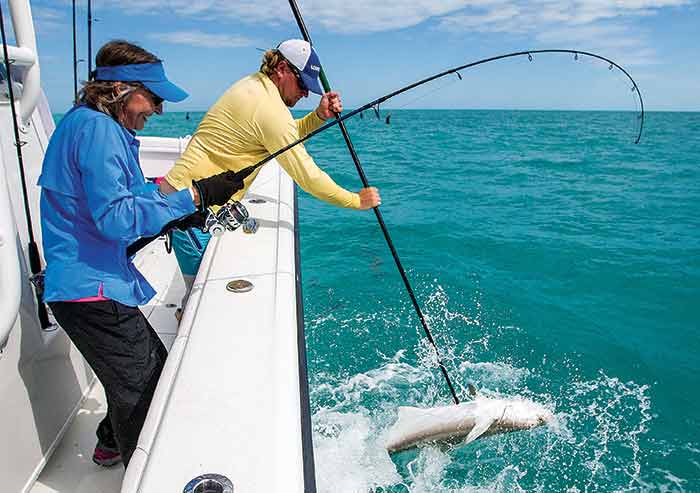Fishing rod guide Solid inserts are materials set within the guide frame to reduce friction from the fishing line. The right ones depend on the angling conditions and the type of line used.
Choosing the correct Fishing rod guide Solid inserts are key for both novice and seasoned anglers aiming to optimize their fishing experience. These inserts protect the line and enhance casting performance by helping to distribute stress during line retrieval and casting.
Durability, smoothness, and heat resistance are crucial characteristics to consider for an insert material. Materials like silicon carbide, zirconium, and aluminum oxide are popular due to their ability to withstand constant line motion and minimize wear. Each material has unique properties that cater to different fishing scenarios, from lightweight action to heavy-duty saltwater challenges. Selecting the right guide inserts involves matching these properties with your specific fishing style and conditions to ensure a successful and enjoyable outing.

Credit: blog.fishidy.com
Anchoring The Basics: The Role Of Fishing rod guide Solid inserts.
Fishing endeavors hinge on gear precision, with fishing rod guide inserts playing a pivotal role. These small but critical components allow lines to glide smoothly, minimize friction and wear, and enhance the overall fishing experience. Understanding their functions leads to better gear choices and improved performance on the water.
Materials And Performance
Fishing rod guide inserts come in a variety of materials. Each type has its performance traits. Some popular materials include:
- Aluminum Oxide: Great for general use and resistant to wear.
- SiC (silicon carbide) offers exceptional heat dissipation and durability.
- Ceramic reduces line friction to enhance performance.
- Zirconium balances smoothness and durability, making it suitable for braided lines.
Selecting the right material can lead to longer casts and an extended gear lifespan. Match the insert material to your fishing style and target species for optimal results.
Impact On Casting And Retrieval
The right guide inserts can make a significant difference in casting distance and retrieval smoothness. Issues such as line sticking or snapping often stem from poor guide insert choices. Consider these points when selecting inserts:
| Feature | Impact on Casting | Impact on Retrieval |
|---|---|---|
| Size | Large inserts help with longer casts. | Allow for better control and smooth line retrieval. |
| Material | Smooth materials improve cast distance. | Reduce friction for a consistent retrieve. |
| Design | Streamlined design can enhance aerodynamics. | Avoids line tangles and ensures efficient line lay. |
Reflect on the conditions you’ll be fishing in and the type of line you prefer. This will guide your choice for optimal casting and retrieval performance. Selecting the correct guide inserts not only boosts efficiency but also maximizes enjoyment during fishing trips.
From Eyes To Inserts: Components Of A Fishing Rod
Understanding the parts of a fishing rod will enhance your angling experience. The guides, often termed “eyes,” play a pivotal role. These guides lead the line from reel to tip. Their core component, the insert, affects your rod’s performance. Choosing the right ones could make all the difference in your fishing endeavors.
Guide Anatomy 101
Fishing rod guides are small loops or rings fixed along the rod. They ensure smooth movement of the line. Each guide comprises two main parts: the frame and the insert. The frame attaches to the rod. The insert, within the frame, reduces friction and protects the line. Well-crafted inserts reduce wear on the line and boost casting distance.
Varieties Of Fishing Rod Guides
There are multiple types of rod guide inserts. The choice depends on your fishing style and target species. Here are some common types:
- Aluminum oxide is a favorite among anglers for its balance between quality and affordability.
- Silicon Carbide (SiC): These provide excellent heat dissipation, making them ideal for heavy-duty fishing.
- Ceramic: resistant to wear and gentle on the line.
- Titanium: lightweight and virtually indestructible, best for high-performance rods.
Selecting the right insert material keeps the line free from damage and enhances castability. Match the guide with your fishing technique and the environment for optimal results.
Decoding The Different Types Of Guide Inserts
Choosing the right guide inserts is key to a smooth fishing experience. Guide inserts protect your fishing line from wear and tear. There are several types to match your fishing conditions and preferences. Today, let’s decode the different types of guide inserts and see how each can enhance your angling game.
Ceramic: A Popular Choice
Ceramic inserts are a top pick among anglers. Known for their smooth surface, they ensure that your line glides easily without friction. Perfect for all types of lines, including braided ones. Ceramic inserts come in various qualities, like aconite or SiC (silicon carbide), with SiC being the premium option.
- Alconite – lighter and nearly as hard as SiC, making it great for lighter setups.
- SiC is the hardest and most durable, offering exceptional heat dispersion.
Stainless Steel: The Durable Option
For those seeking ruggedness, stainless steel stands strong. It boasts high impact strength and resists corrosion. This makes it ideal for saltwater or rough fishing trips. While not as smooth as ceramic, they withstand great strain and are economical.
| Type | Benefits |
|---|---|
| Ceramic Inserts | Smooth, versatile, it reduces friction. |
| Stainless Steel Inserts | Durable, excellent for rough conditions. |
Matching The Inserts To Your Fishing Style
Every angler knows that the perfect cast needs the right fishing rod, and at the heart of that rod, are the guide inserts. Guide inserts protect your line as it slides through the rod’s guides. These little rings might seem simple, but they can make a huge difference in your fishing performance.
Selecting guide inserts involves more than just picking any ring. You need to consider where and what you’ll be fishing to get the best results.
Saltwater Vs. Freshwater
Fishing in saltwater and freshwater environments demands different types of inserts. Each has its unique challenges:
- Saltwater: It can corrode equipment quickly.
- Freshwater: It usually poses fewer toughness demands.
| Environment | Insert Material |
|---|---|
| Saltwater | Corrosion-resistant materials like Silicon Carbide (SiC) |
| Freshwater | Cost-effective like Alumina Oxide |
Choose wisely based on the water you fish in most often to maximize durability and performance.
Game Fish And Target Species Considerations
The species you target also affects your guide insert choices. Different fish require different fishing techniques and equipment strength. Here are a few considerations:
- Heavy hitters: Large species like marlin need strong inserts that hold up to intense fights.
- Light touch: Trout or panfish allow for lighter and more sensitive inserts.
Bear in mind the sizes and fighting styles of your target fish. Choose inserts that can handle the specifics. The right match enhances both line protection and casting accuracy.
Taking The Line Into Account
Taking the line into account is crucial when selecting the perfect fishing rod guide insert. The type of line you choose directly affects your fishing success and the durability of your gear. From line compatibility to the interplay of line weight and guide inserts, each factor plays a significant role. Ensure you align these elements to optimize your fishing rod’s performance.
Braided Vs. Monofilament Compatibility
Choosing the right guide inserts means understanding the difference between braided and monofilament lines. Monofilament lines require inserts that offer a smooth surface to reduce friction. Braided lines, known for their strength, demand durable inserts that can handle their abrasive nature. Here’s what to consider:
- Monofilament: softer on inserts, suited for ceramic or nylon.
- Braided: Requires hard, robust materials like silicon carbide.
Line Weight And Guide Insert Interplay
The weight of the line used has a direct impact on the guide inserts. Lighter lines work well with finer inserts, reducing the overall weight of the rod. Heavier lines call for stronger, often larger, inserts to facilitate smooth casting and retrieval. Always match the insert to your line’s weight:
| Line Weight | Guide Insert Type |
|---|---|
| Light | Thin, lightweight inserts |
| Medium | Balance of strength and weight |
| Heavy | Thick, durable inserts |

Credit: www.saltstrong.com
Inspecting Guide Inserts For Wear And Tear
Anglers know that keeping fishing gear in prime condition is crucial for a successful catch. The guide inserts on a fishing rod can often be overlooked, yet they play a key role. These small, but mighty, pieces can affect line performance and the overall fishing experience.
Signs Of Damage To Look For
Regular inspection of guide inserts helps maintain their function. Be on the lookout for:
- Cracks or grooves: visible lines or indentations on the insert’s surface.
- Chips: Small pieces missing from the edge may damage the fishing line.
- Rough Spots: Uneven areas that could wear out the line quickly.
Guidelines For Maintenance And Replacement
Maintaining guide inserts extends their lifespan and ensures smooth line movement. Follow these steps:
- Clean Regularly: Wipe down inserts to remove debris and salt buildup.
- Inspect After Use: Check for signs of damage after each fishing trip.
- Replace if necessary. Swap out damaged inserts to avoid line wear or breakage.
Refer to the manufacturer’s guidelines for specific insert care instructions and intervals between replacements.
Step-by-step: Installing New Guide Inserts
Guide inserts play a crucial role in your fishing rod’s performance. These small rings line the insides of your rod guides, allowing your fishing line to glide smoothly during a cast or retrieval. Over time, they can wear down or fall out, necessitating replacement. Proper installation is key to ensuring that your rod functions at its best. Follow these steps to install new guide inserts like a pro.
Tools And Materials Needed
Before starting, gather the following tools and materials:
- Replacement guide inserts
- Epoxy resin or superglue
- Toothpick or fine-tipped applicator for glue
- Cotton swabs and alcohol for cleaning
- Tweezers for precision placement
Diy Guide Insert Replacement Procedure
Follow this procedure to replace the guide inserts:
- Remove the old insert: If remnants of an old insert are still in place, carefully remove them.
- Clean the guide frame: Use a cotton swab and alcohol to clean the guide. This ensures a strong bond.
- Test fit the new insert: Without glue, place the new insert into the guide. Make sure it fits snugly.
- Prepare the glue: Mix epoxy resin or ready your super glue.
- Apply glue: With a toothpick or applicator, apply a thin layer of glue to the rim of the guide frame.
- Insert the new insert: Use tweezers to position the new guide insert into the frame. Press gently but firmly.
- Wipe away excess: Quickly remove any excess glue with a dry cloth.
- Cure: Let the glue set according to the manufacturer’s instructions. Don’t disturb the rod during this time.
Boldly tackle the task of guide insert replacement and trust the process to enhance your fishing experience.
Pro Tips For Choosing The Right Guide Inserts
Fishing rod guide inserts are small, but essential components of a good fishing rod. They help the line to glide smoothly, improving casting and the overall fishing experience. Choosing the right guide inserts can seem overwhelming, but with some pro tips, you can make an informed decision that enhances your fishing game.
Consulting With Experienced Anglers
Talking to seasoned fishermen unlocks a treasure trove of knowledge. They have tested different guide inserts. They know which ones last longer and perform better. Real-world insights guide your choice.
- Ask about material durability—how long inserts can withstand frequent use.
- Gather feedback on insert shapes and performance in varied situations.
- Inquire about ease of maintenance; keeping your gear in top shape matters.
Factor In Environmental Conditions
Guide inserts face different environments. Each environment affects them uniquely. Saltwater and freshwater have distinct impacts on materials.
| Condition | Material Best Suited |
|---|---|
| Saltwater | Corrosion-resistant alloys, ceramics |
| Freshwater | Softer ceramics, hard metals |
| Heavy Loads | Reinforced compounds, titanium guides |
Match the insert material to your fishing environment for longevity and peak performance. A well-suited guide insert endures the rigors of its setting.
Wrapping It Up: The Effect Of Inserts On Rod Performance
Understanding the impact of inserts on fishing rod performance is crucial. The right guides contribute to a smoother casting experience. They protect your line against wear and snags. This section dives into the benefits and how top-notch inserts enhance your fishing rods.
Summing Up The Benefits
Quality guide inserts bring several advantages to your fishing adventures. Here’s a quick highlight:
- Reduced Line Friction: Smooth inserts allow the line to glide effortlessly.
- Better Heat Dissipation: High-quality materials disperse heat to protect your line.
- Enhanced Durability: Durable inserts mean a longer lifespan for your rod.
- Lightweight Design: Lightweight materials improve rod sensitivity for better feedback.
How Quality Inserts Elevate Your Angling Experience
Carefully chosen inserts turn good rods into great ones. They elevate your performance on the water. Here’s how:
| Insert Quality | Performance Impact |
|---|---|
| High-Grade Material | Reduces wear on lines, allowing for longer casts. |
| Smooth Surface | Minimizes resistance, increasing casting accuracy and distance. |
| Proper Fit | Ensures a balanced rod, which leads to better control and sensitivity. |
Remember, the goal is to match the inserts to your fishing style and conditions. Your overall experience greatly depends on these small, yet essential components.

Credit: www.amazon.com
Frequently Asked Questions Of What Are Fishing Rod Guide Inserts, And How Do You Choose The Right Ones?
What Are Guide Inserts On Fishing Rods?
Guide inserts are small rings within the rod’s guides, providing a smooth surface for your fishing line to slide over. They reduce friction and protect the line from wear, enhancing casting distance and accuracy.
How Do Guide Insert Materials Affect Fishing?
The material of guide inserts affects rod performance. Ceramics are durable and offer low friction. Silicon carbide provides exceptional heat dissipation. The right material choice enhances longevity and casting efficiency.
What Determines The Right Guide Insert Size?
The guide insert size depends on the rod type and fishing technique. Larger inserts decrease line resistance for longer casts, while smaller ones enhance sensitivity for light bite detection. Balance the size for optimal performance.
Can Guide Inserts Impact Casting Distance?
Yes, guide inserts can impact casting distance. Low-friction materials and properly sized inserts allow smoother line travel, increasing casting range. Optimized insert distribution along the rod also contributes to better casting outcomes.
Conclusion
Selecting the perfect fishing rod guide inserts is crucial for any angler’s equipment. It ensures your line glides smoothly and increases the lifespan of your rod. Remember, the material and size matter most. Balance affordability with quality, and you’ll elevate your fishing game.
Happy angling!

